YANGON—For 30 years, the military-controlled General Administration Department has been the backbone of Myanmar’s public administration. From Union to village level, the GAD is authorized to support government security efforts—such as imposing bans on activities that pose a threat to rule of law and stability or to sue a person who commits arms-related crimes—while reporting relevant information back to Naypyitaw. These include population movements, security incidents, and basic demographic data. Moreover, the GAD still has power to enforce some civil laws.
The GAD’s scrutiny and interferences have long been criticized by human rights and political activists who claim the department is basically a tool to oppress their movements while providing on-the-ground information from across the country to the home affairs ministry which is controlled by the military.
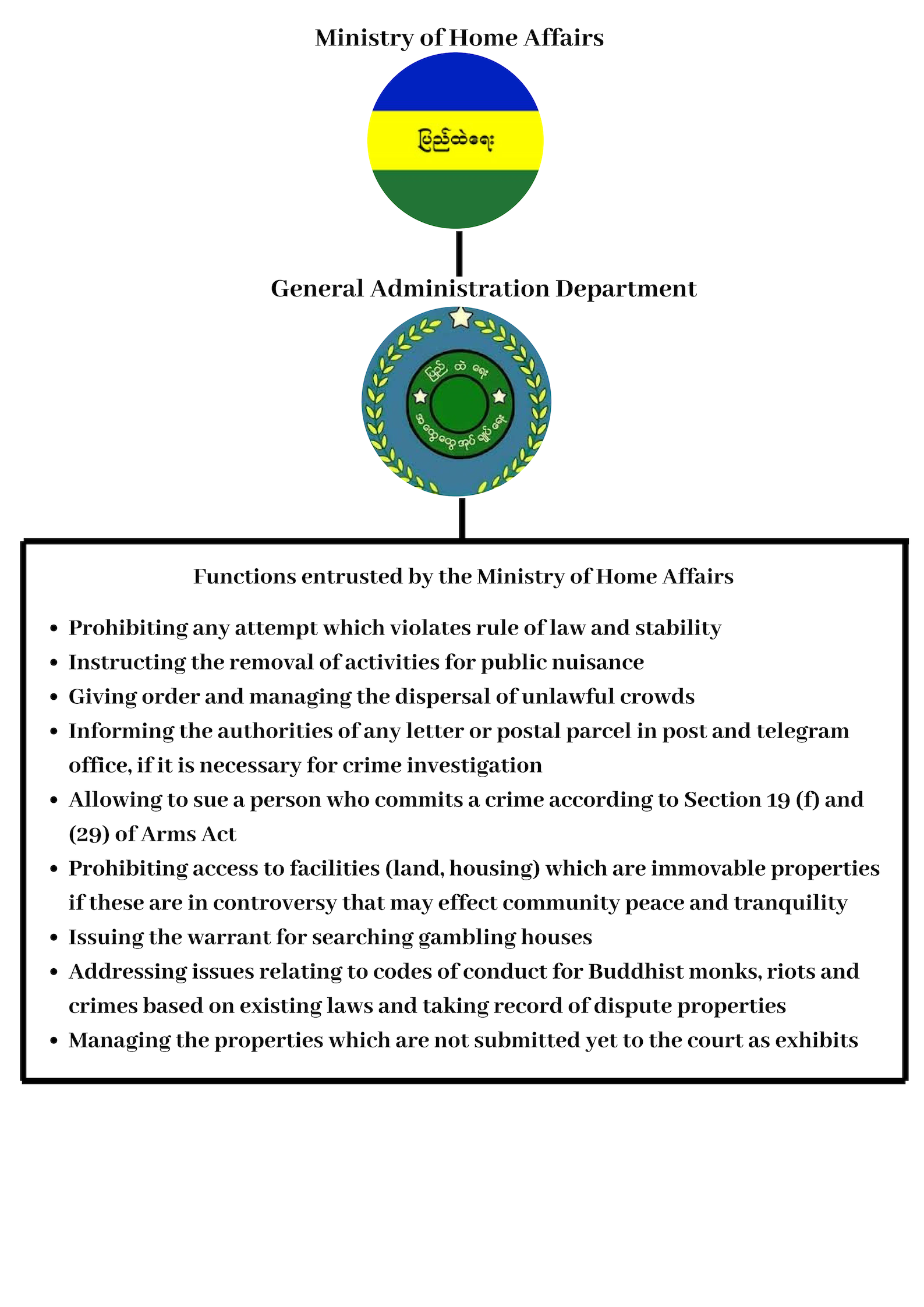
Recently, the government revealed its plan to transfer the department to the civilian-controlled Ministry of the Office of the Union Government, but it hasn’t yet announced a timeframe for the transfer.
As of now, the GAD remains part of the Ministry of Home Affairs (MOHA). The ministry itself, according to the 2008 Constitution, is one of the three ministries led by a major-general appointed by the commander-in-chief of the armed forces. The majority of GAD senior officers have military backgrounds.
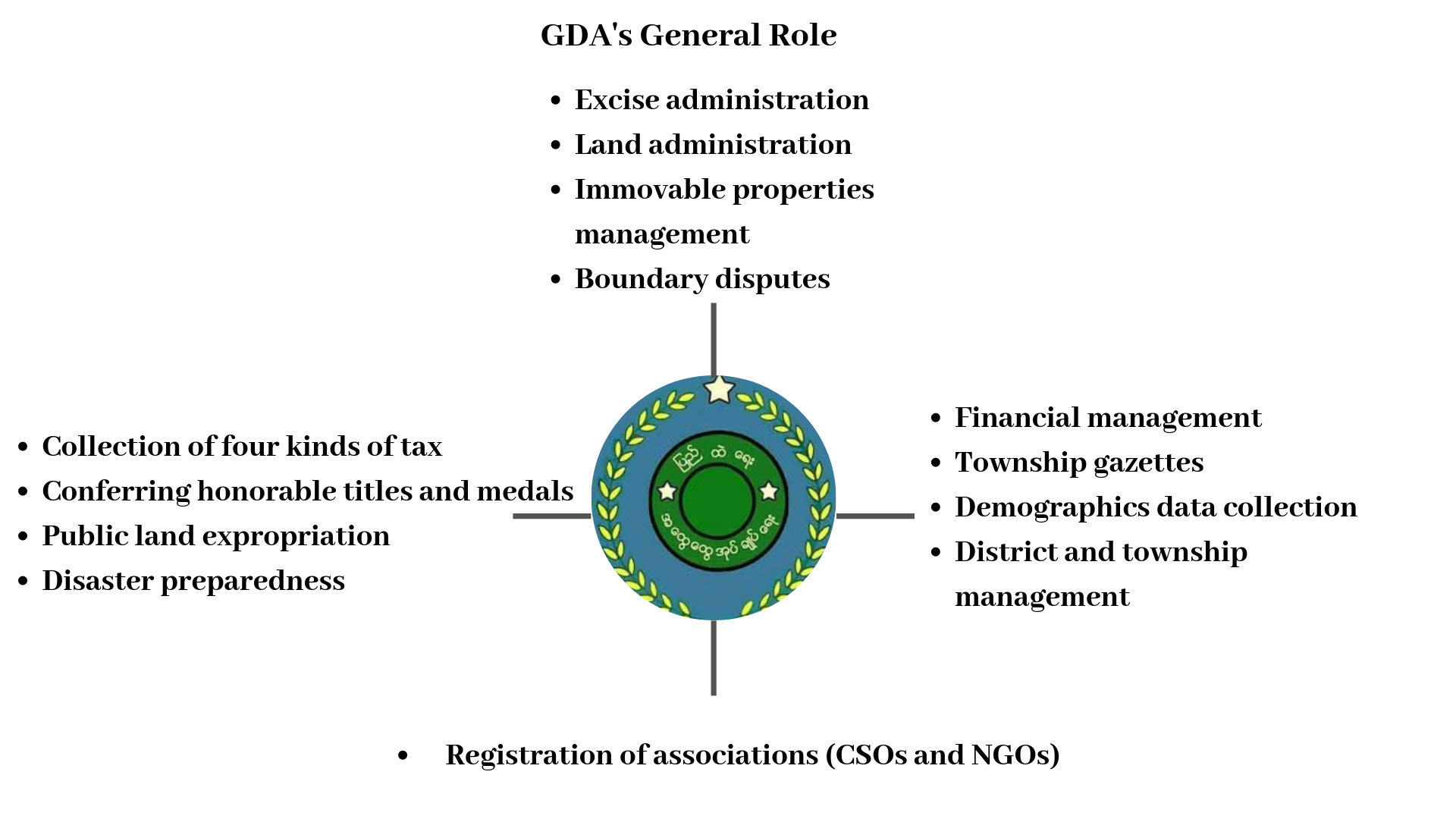
How the GAD Functions
The 2008 Constitution allows the GAD to act as a primary link between the Union government and subnational-levels of governance as well as the control of the country’s administrative institutions: the districts and townships.
At Union level, the GAD has its headquarters in Naypyitaw. The department’s branches across the country have to submit their on-the-ground reports at the Naypyitaw headquarters.
According to the 2008 Constitution, the GAD has the mandate to provide administrative and coordination functions for the region and state governments, the region and state parliaments as well as Union ministries and state and region departments.
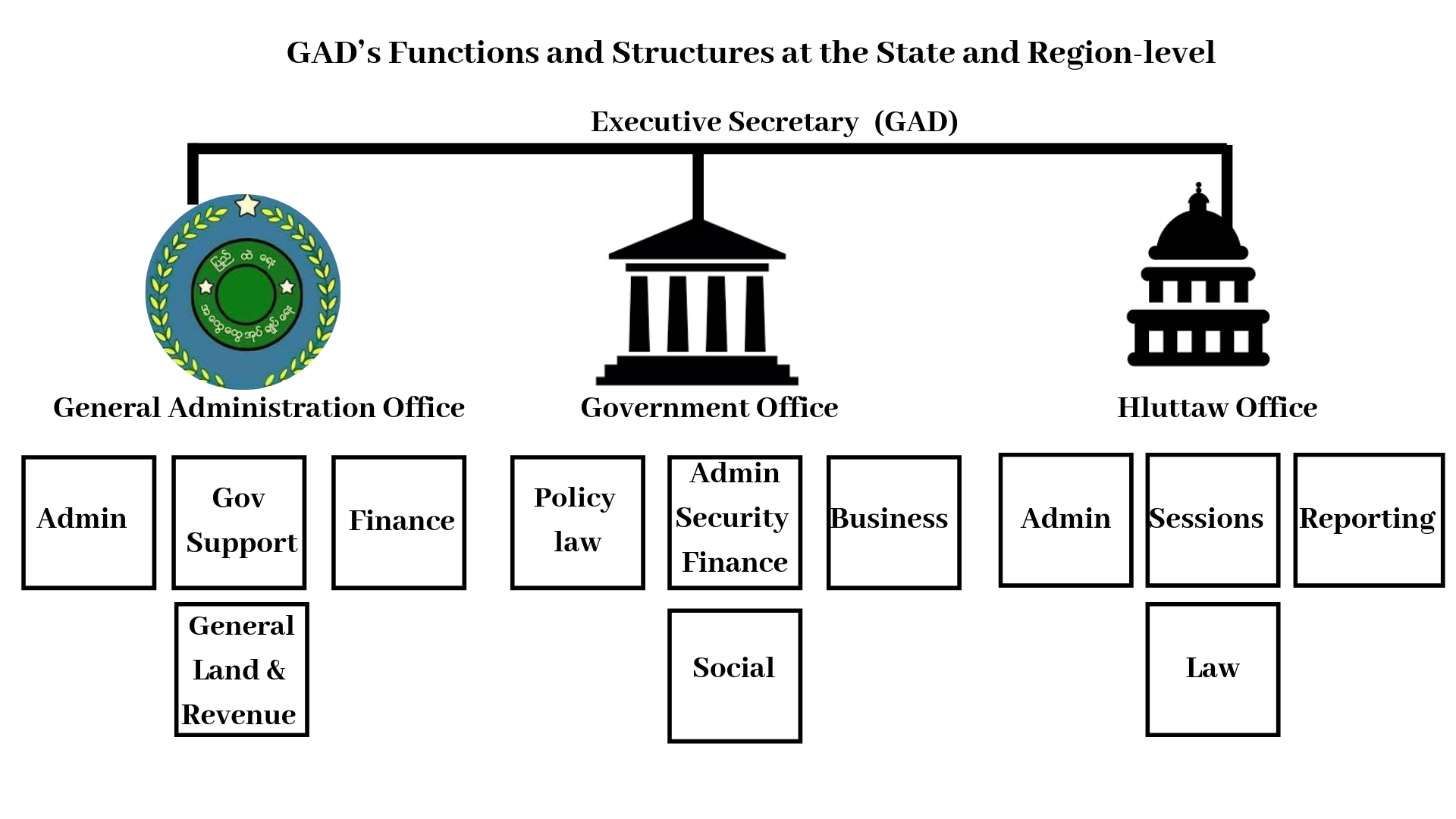
The head of the GAD (deputy director general level) for each state and region is the executive secretary of the state/region government. They also supervise the state and region government offices and state and region parliament offices as well.
Furthermore, the 2010 State and Region Government Law allows the GAD to manage all communication, administration, budget and general functioning of both the executive and legislative branches of a state and region governments.

In the government offices, the GAD has two sub-departments to support the chief minister and their cabinet which is focused on economic and social policy support and administration of the chief minister’s schedule. In the parliament offices, the department has two sub-departments—engaging legal support including drafting legislation as well as managing Hluttaw sessions.
According to Asia Foundation’s report “Administering the State in Myanmar,” GAD also plays a strong role in the fiscal architecture and financial management at state/region level. The subnational GAD offices are currently accounted for under state/region government budgets rather than under the GAD Union budget—including the discretionary funds traditionally budgeted to GAD for rural development.
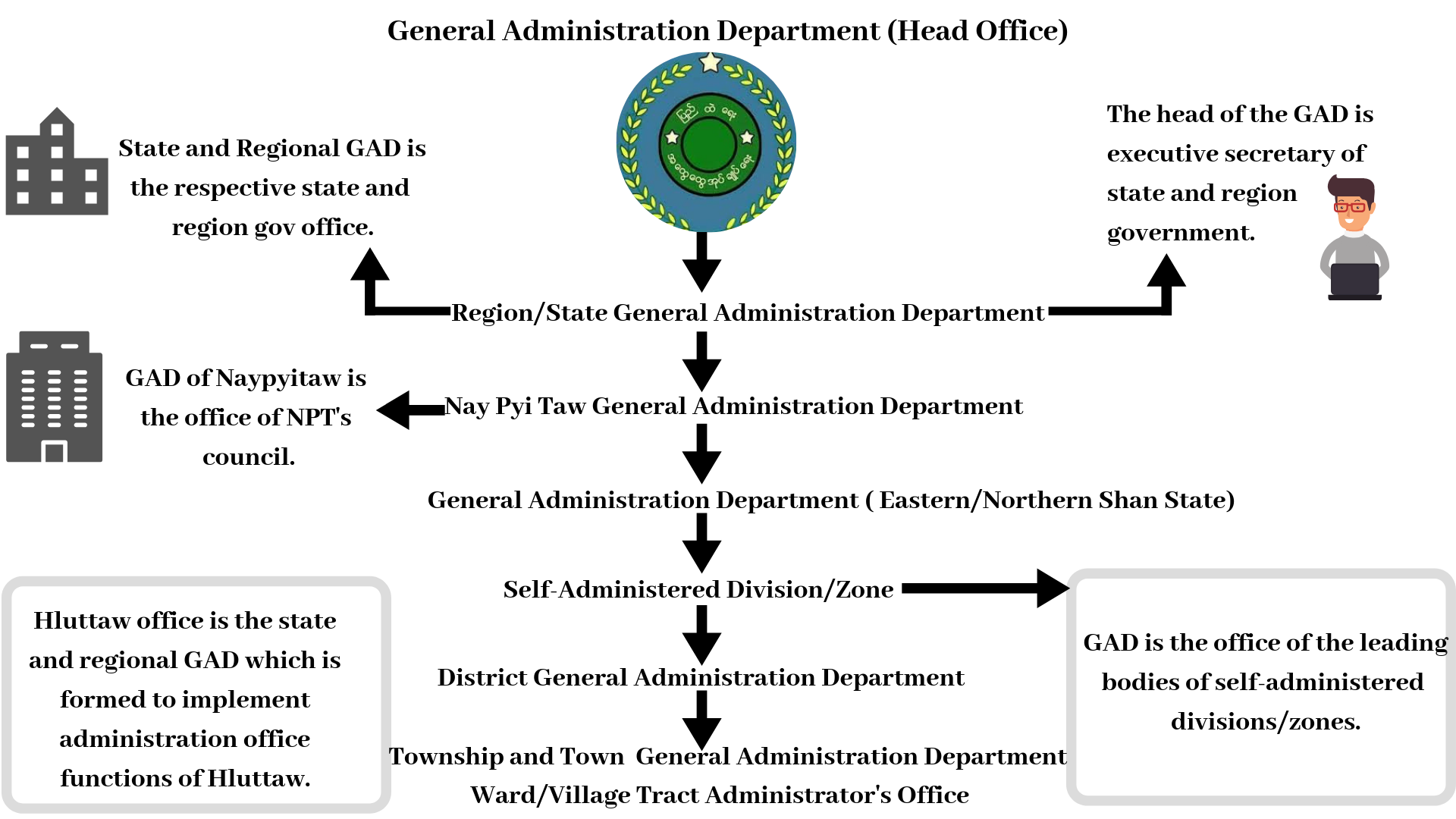
The report also said GAD provides fiscal management for several other local development funds such as assessing needs for the rural development budget of the Ministry of Border Affairs, management support for the implementation of the Union government’s Poverty Reduction Fund, and needs assessment and implementation of the Constituency Development Fund that allows the constituency’s four candidates to select local development projects in their constituency of a value up to five million kyats ($3,200) per constituency. The fund has no dedicated management office and it relies on the GAD and assorted township infrastructure for implementation.
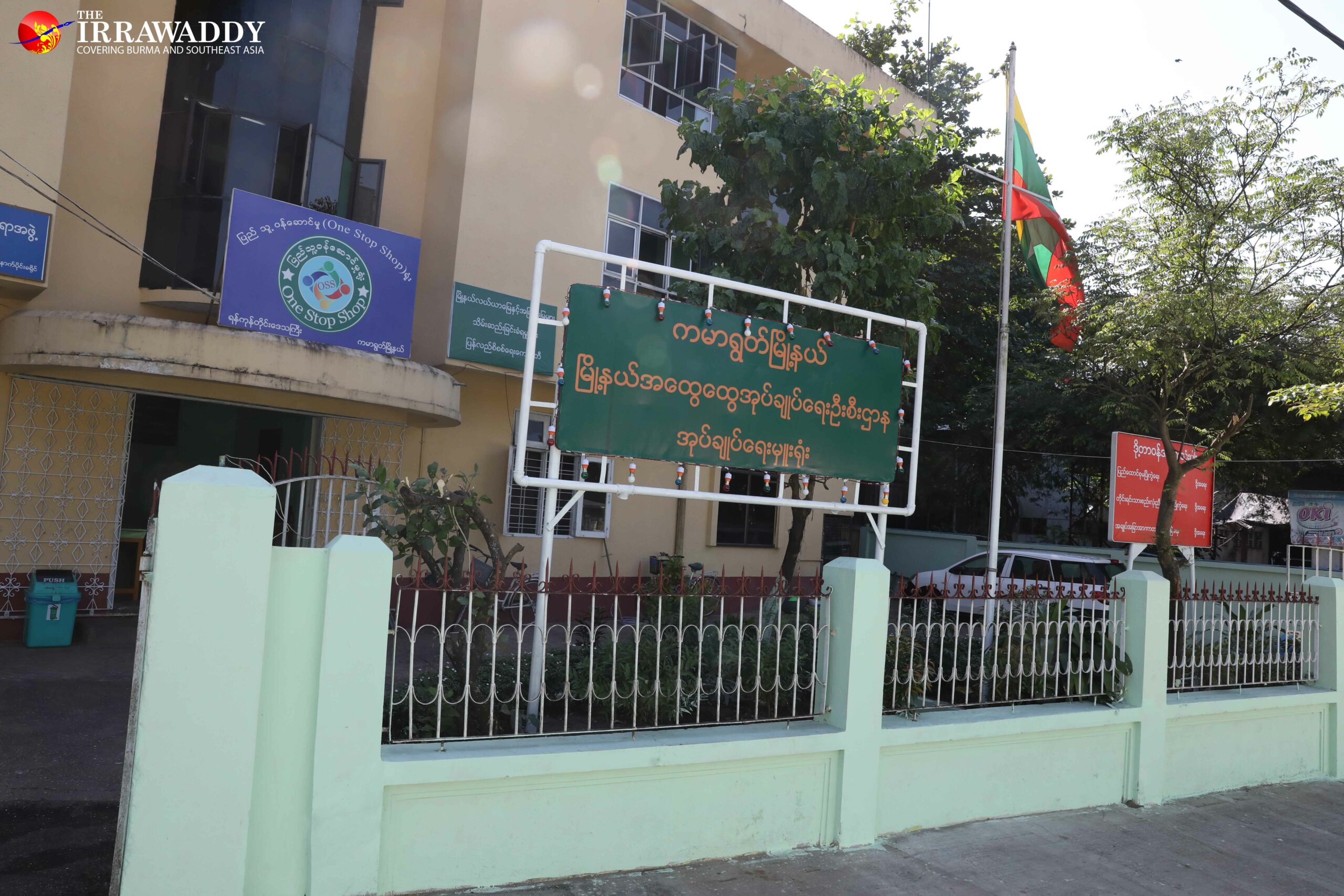
GAD offices are also leading bodies in self-administered divisions and zones like the Pa-O, Kokang and Wa regions. In Naypyitaw, according to the 2008 Constitution, the GAD plays a central role in administering the capital’s two districts and eight townships from the office of the Naypyitaw Council.
At township and village level, GAD offices are the backbone of engagement between citizens and the state/region. The township offices are under the township administrator— taking the key functions of the government’s role such as population registration, land registration, demographics data collection, supervising village administration, assorted land management, local dispute resolution, and tax collection including excise tax, land tax, irrigation tax and mineral tax.

References: 2008 Constitution, 2010 State and Region Government Law, Ministry of Home Affairs website, GAD website and Asia Foundation report “Administering the State in Myanmar.”

















